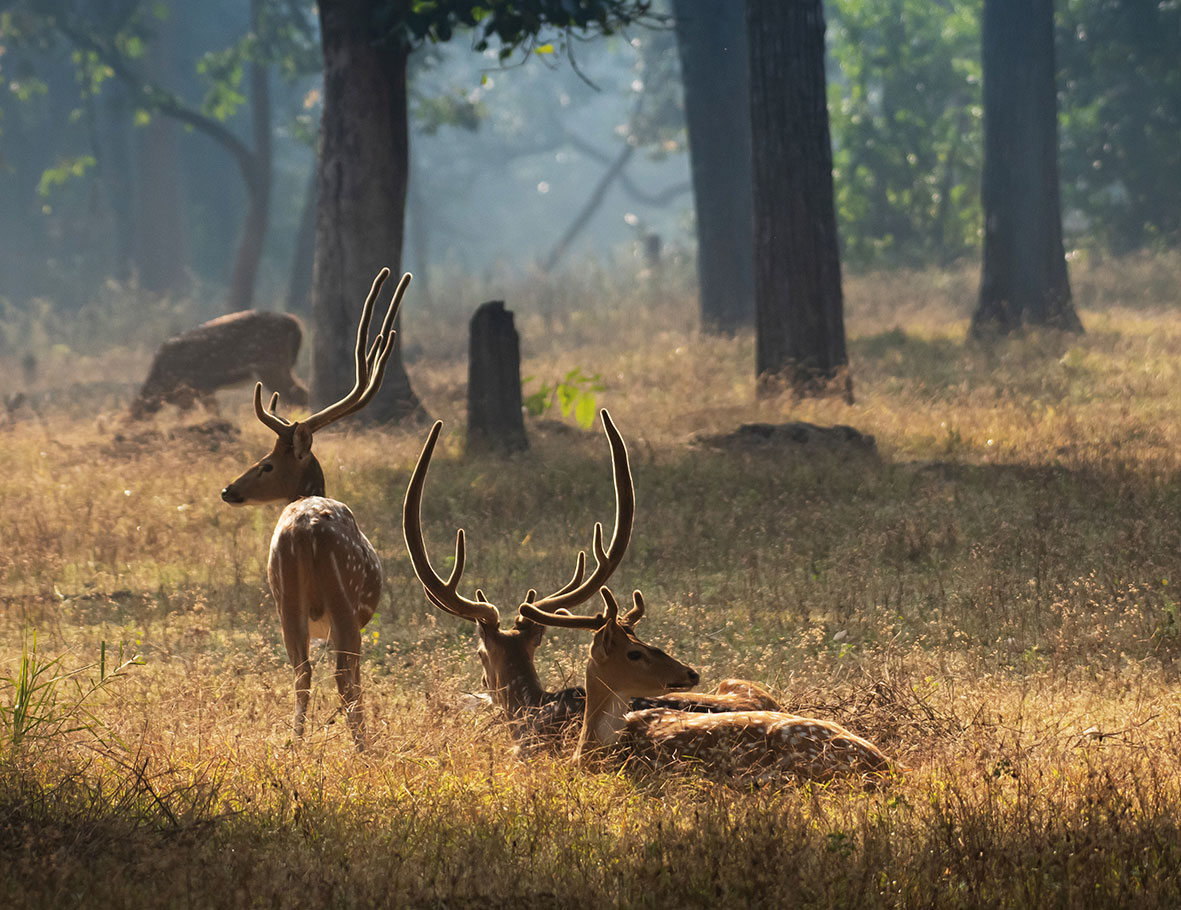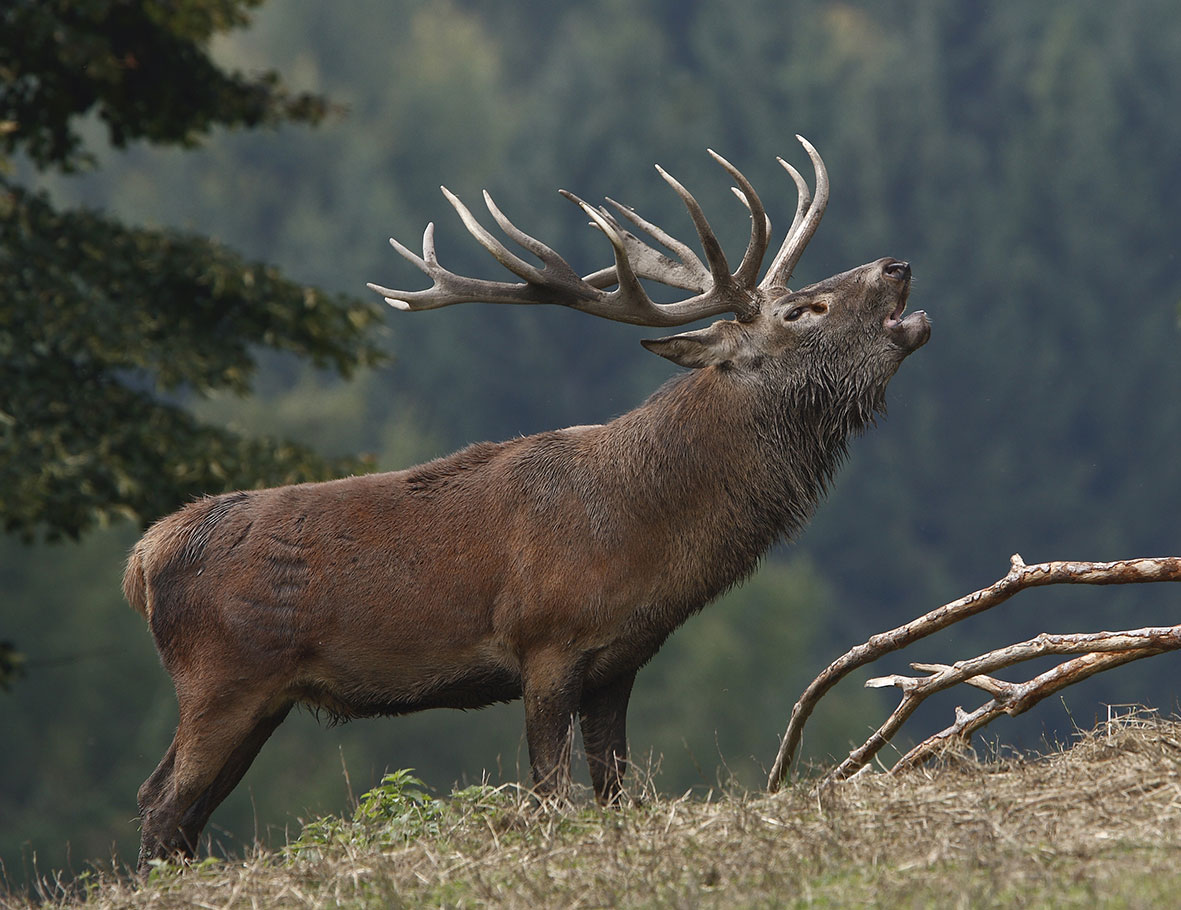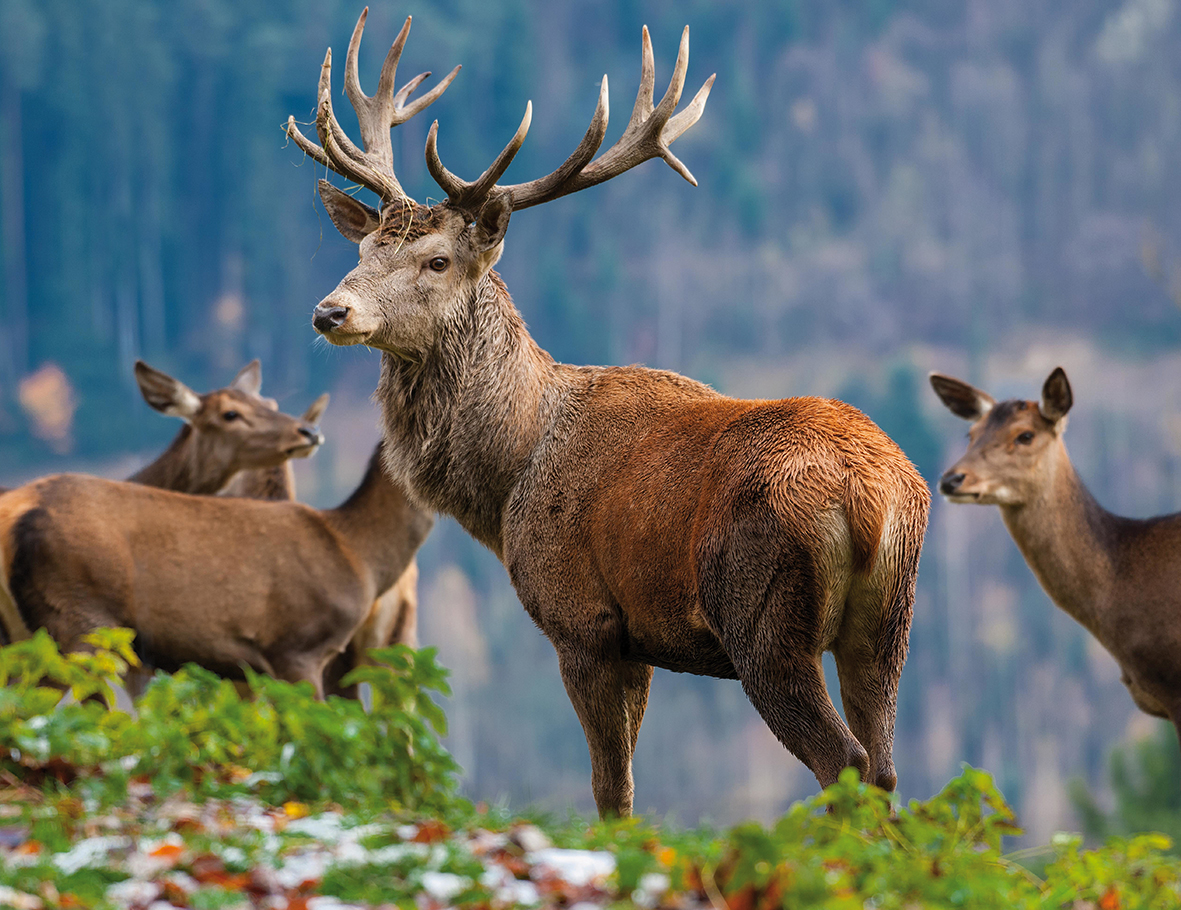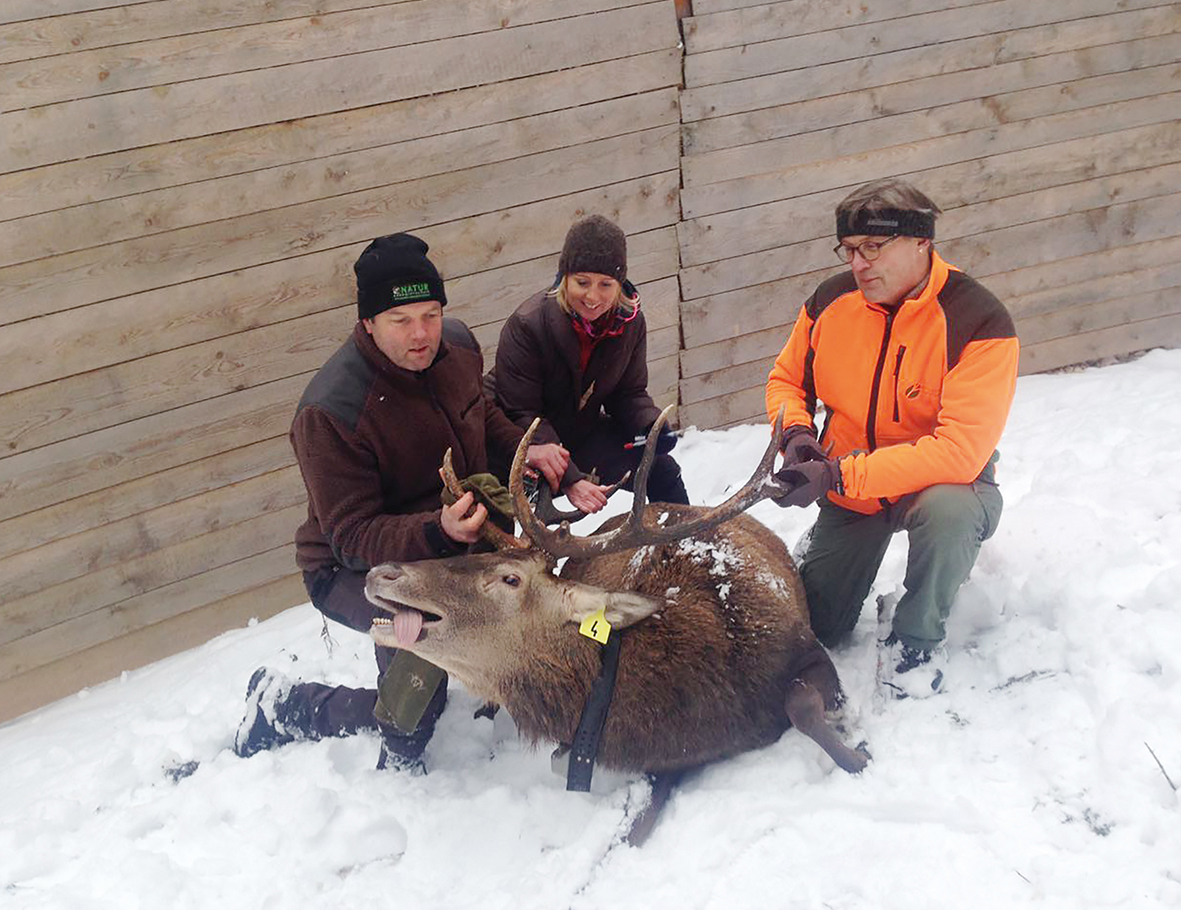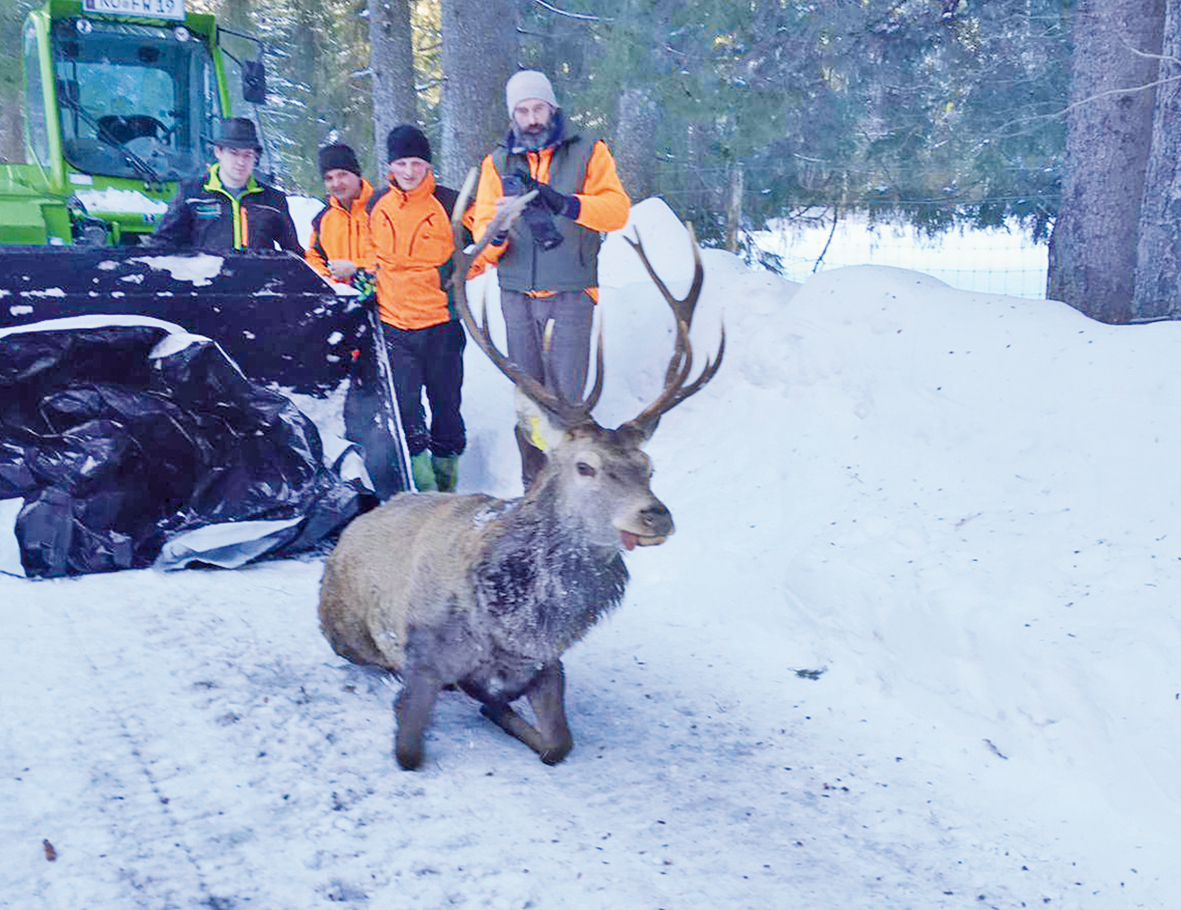Bavaria
The King of the Forest and his Realm
Rothirsche sind heimische Wildtiere – doch nicht überall ist ihr Bestand gesichert. Welche Faktoren zu ihrem Vorkommen beitragen, soll eine Studie zum Raum- Zeit-Verhalten von Rotwild im Forstbetrieb Ruhpolding klären. Die Akademie unterstützt diese Forschung mit praktischer Hilfe.
Red deer are endemic wild animals; however, their population is not safe everywhere. The determination of which factors contribute to their existence is the focus of a study into space-time behaviour by the Bavarian State Forestry in Ruhpolding. The Academy supports this research project with practical help.
The facts are striking: Some regions are teeming with red deer, while in others, no deer are to be found in habitats typical for this species. Why is that? A large-scale study by the Bavarian State Forestry in Ruhpolding aims to determine how the animals can naturally resettle regions previously free of red deer.
Project leader, engineer Horst Leitner, reports:
“In the winter of 2017/2018, 12 red deer were captured at two different feeding locations (Weißenstein and Maurach), anesthetized, and equipped with radio collars. Dr. Henning Wiesner conducted the immobilization using his blowpipe, dart gun and the anesthesia Hellabrunn mixture, which has a proven record of over 40 years. The collars were to aid in researching the space-time behaviour of the red deer and in determining the consequences of tourism and hunting-free zones on the wild animals’ behaviour. The radio collars show the coordinates of the animals’ movements every three hours and 20 minutes and transmit these daily to the server at our tracking station. After two years, the collars fall off using an automatic drop-off mechanism so that the animals don’t have to be recaptured.
The first results from the data collection already show that the average habitat size of the red deer with open feeding in Weißenstein is more than twice as exten- sive as that of the red deer in the winter feeding area in Maurach. The home range of male animals is four times the size of female animals.
This knowledge already illustrates how this animal species moves in its habitat. Previous studies have been extremely rudimentary. Nonetheless, the project participants had to struggle with some difficulties: already in the winter shortly after the study began, one of the collared females was found dead. Based on dental attrition, the examination by the animal welfare officer estimated the age of the animal to be over 16 years; thus deter-mining old age to be the natural cause of death.
The oldest male stag will also no longer be able to provide further data: the animal was shot one year after onset of the study on January 30, 2019 in a neighboring hunting area. The situation was particularly controversial because the animal was shot illegally with the use of a night-vision device. In addition, the stag was not on the shooting plan of the hunting territory. The hunter’s permit was immediately revoked and a fine was imposed. Before its unfortunate death, the illegally killed stag had been detected in winter 2018/2019 first despite two meters of snow at 1,000 meters above sea level, and then subsequently descended in mid-January to an altitude of 600 meters. The more than 10-year-old stag had been familiar with the winter feeding location. Nevertheless, it did not return to the feeding station that winter at which it had been detected at the beginning of the project. This decision was a fatal mistake.
A series of helicopter flights geared at the restoration of protected forest areas took place in June 2019. How would the tagged animals react? Interestingly, the deer demonstrated little avoidance or flight behavior, as the radio data indicated.
It’s exciting to see how this project will develop. The data obtained should provide information on how the red deer population can be increased naturally in areas where they have never existed before.”The Academy will support this project in the future.



